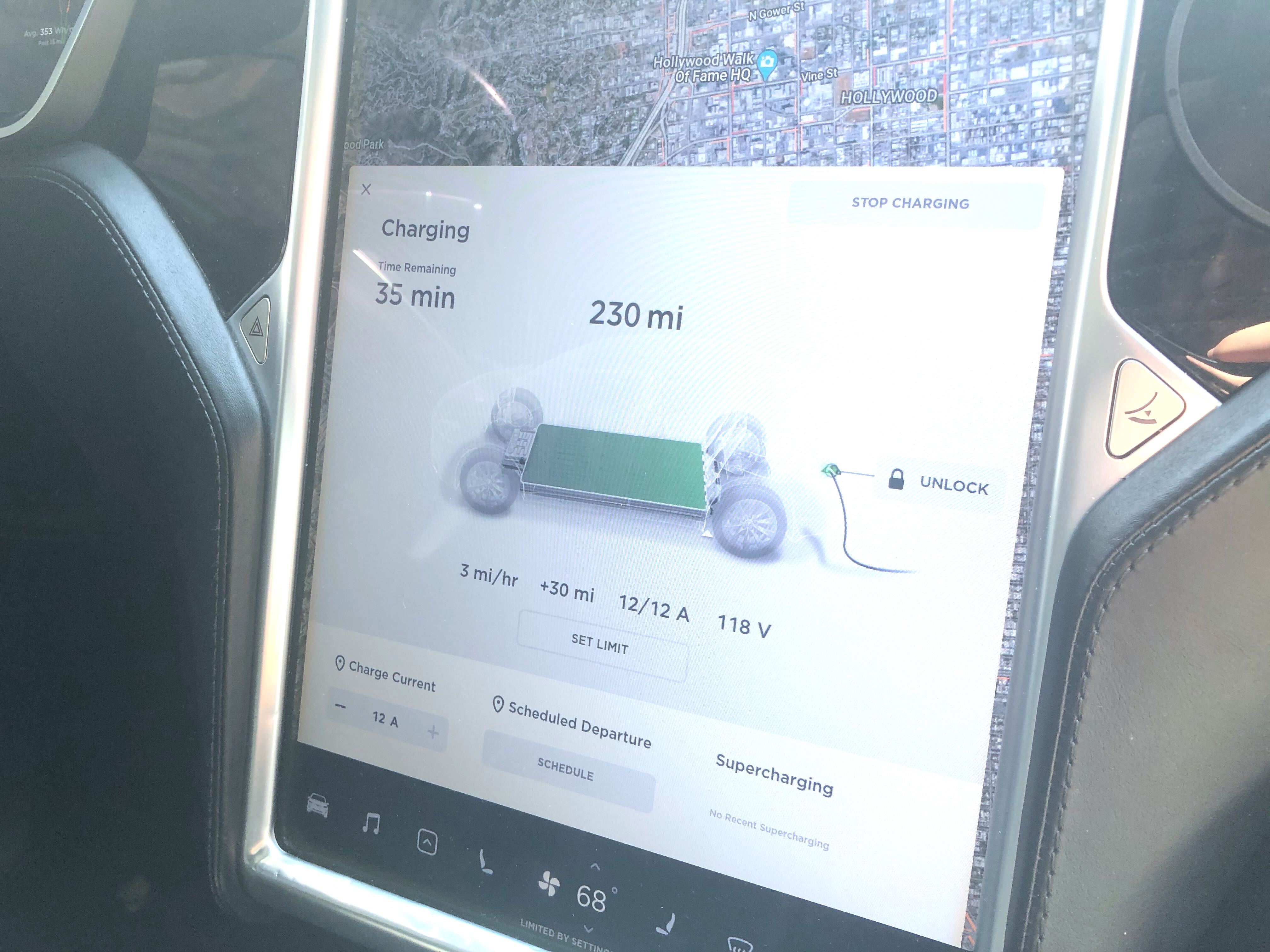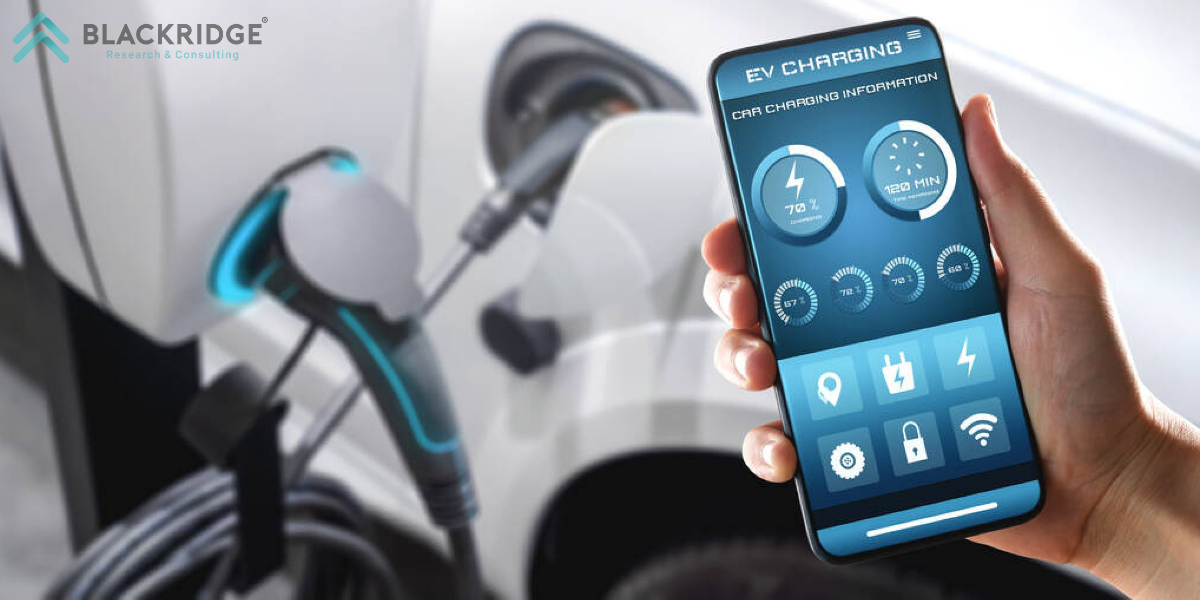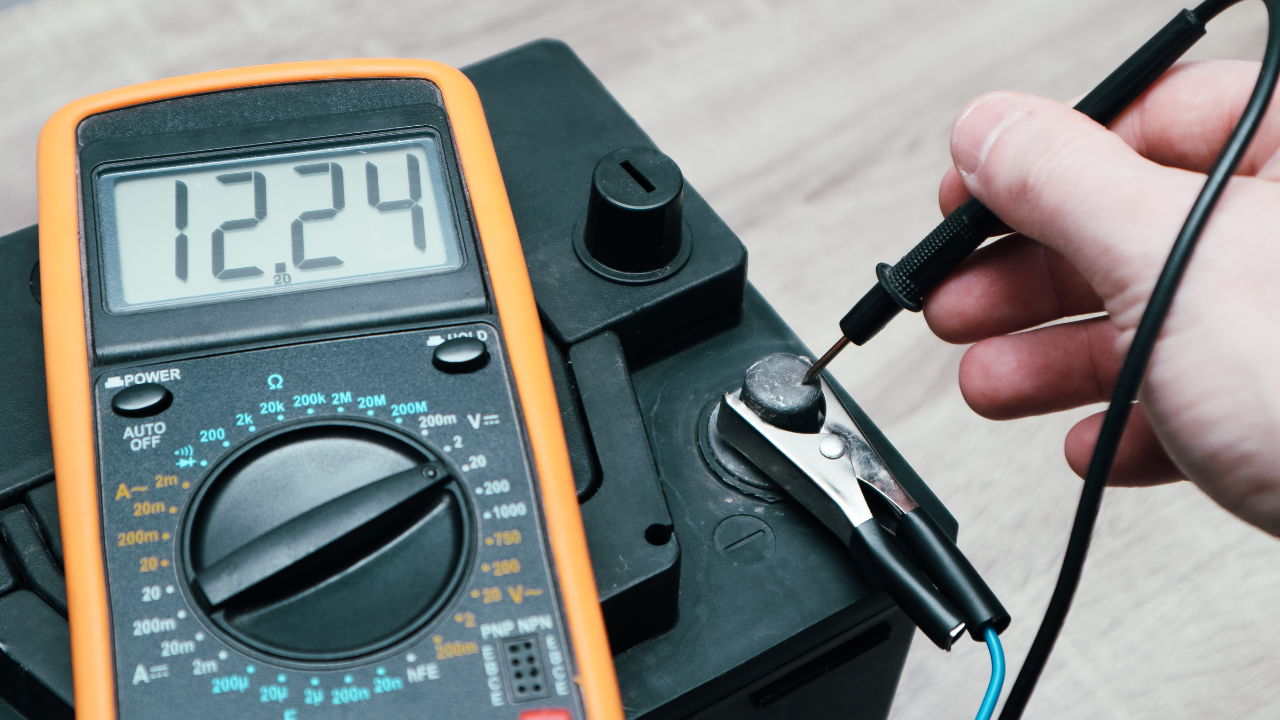How to check battery degradation Tesla, access the ‘Energy’ screen on the vehicle’s touchscreen display. This feature estimates the battery’s capacity through projected range calculations.
Exploring your Tesla’s battery health is essential for maintaining its efficiency and longevity. Understanding your battery’s state offers peace of mind and helps in planning long-term vehicle usage. As electric vehicles rely on robust battery performance, assessing this can save you from unexpected inconveniences.
Owners can scrutinize the battery’s performance by examining the car’s projected range over time, comparing it with the original EPA-rated content when the vehicle was new.
This straightforward approach is crucial for Tesla drivers keen on ensuring their vehicle operates at its optimal capability. Regular checks enable swift action in case of any significant drop in performance, ensuring you always stay ahead of your vehicle’s maintenance needs.

Credit: electrek.co
Introduction To Battery Degradation In Electric Vehicles
Welcome to our exploration of electric vehicle battery deterioration. Battery longevity is a primary concern for EV owners, and with the surge in the popularity of eco-friendly transportation, understanding the health and lifespan of your vehicle’s power source is more important than ever.
Batteries are the lifeline of electric cars like Tesla, and their efficiency directly impacts performance and value. Let’s dive into what battery degradation means for your vehicle and how to keep tabs on the health of your Tesla’s battery.
Understanding Battery Health And Capacity
Battery health refers to the condition and performance of a battery. At the same time, capacity indicates how much power a battery can store at a given time. Electric vehicles, including Teslas, rely heavily on their lithium-ion batteries.
These batteries, although high-performing, undergo natural wear and tear over time. Key metrics like charge cycles, internal resistance, and temperature effects are crucial in determining overall battery health and capacity.
Significance Of Battery Degradation In Tesla Models
Tesla models are renowned for their cutting-edge battery technology and long-range capabilities. Despite this, they are not immune to the inevitable process of battery degradation.
As a Tesla owner, it’s critical to understand that your battery’s state impacts your car’s range, charging speed, and overall performance. Proactive monitoring can maximize the battery’s lifespan and the vehicle’s value over time.
Overview Of How To Check And Monitor Battery Degradation
Monitoring battery degradation in a Tesla involves a few straightforward steps. Tesla’s advanced software provides valuable data through the vehicle’s infotainment system. You can assess battery health by checking the ‘Energy’ tab for insights into your current versus original range.
Additionally, third-party applications and specialized diagnostic tools are available to provide a more detailed analysis of your battery’s condition. These tools can offer comprehensive reports, helping you to make informed decisions about vehicle maintenance and when it might be time to service your battery.

Credit: optiwatt.com
Tesla’s Battery Technology And Degradation Patterns
Tesla’s groundbreaking battery technology sets it apart in the electric vehicle market. The company has paved the way for innovative electric vehicle battery composition and longevity approaches. However, like all rechargeable batteries, Tesla batteries also experience degradation over time. Understanding the degradation patterns of Tesla’s batteries can help owners optimize their vehicle’s performance and lifespan.
Tesla’s battery packs are a masterpiece of engineering. Lithium-ion cells, arranged in modules and packs to power the vehicle, are at the heart of Tesla’s technology. Tesla continuously refines its battery design for maximum efficiency and durability.
- High-energy density cells for extended range
- Advanced cooling systems to maintain optimal temperatures
- Strategic arrangement of cells to mitigate damage and ensure safety
Battery degradation is inevitable in electric vehicle ownership, and Tesla is no exception. Generally, Tesla batteries are known for their resilience, often retaining most of their original capacity even after many miles on the road.
While indicative, these numbers can vary based on factors affecting battery longevity.
Several elements affect the rate at which a Tesla battery degrades. Understanding these can help owners preserve battery health.
- Charging practices: Frequent use of Superchargers and charging to 100% can accelerate degradation.
- Driving habits: Heavy acceleration and high-speed driving may contribute to faster wear.
- Temperature extremes: Batteries are sensitive to temperature; too hot or cold environments can negatively impact battery life.
- Vehicular usage: Long periods of inactivity or continuous use can affect battery health.
- Software updates: Tesla’s frequent software upgrades can influence battery management systems, sometimes optimizing for better longevity.
Step-by-step Guide How To Check Battery Degradation
Understanding your Tesla’s battery health ensures its longevity and performance. Over time, batteries degrade, which can impact the range and efficiency of your electric vehicle. Suppose you’re concerned about battery degradation in your Tesla. Following a step-by-step guide can alleviate your worries and give you clear insight into your battery’s condition.
Tesla provides an in-built diagnostic tool through its infotainment system to help owners track their vehicle’s battery health. To access this feature, follow these straightforward steps:
- Tap on the ‘Car’ icon on your Tesla’s touchscreen display.
- Select ‘Service’ to access the vehicle’s diagnostic features.
- Review the ‘Battery’ section for an overview of your battery’s current status.
This built-in functionality offers a snapshot of battery capacity and degradation, though it may not provide deep analysis.
Energy graphs and range estimates visually represent your battery’s performance over time in your Tesla. Navigate to your energy graphs by:
- Touching the ‘Energy’ button on the infotainment screen.
- Studying the ‘Consumption’ chart to track efficiency.
- Observe the ‘Projected Range’ for an estimated distance your Tesla can travel with the current charge level.
While the Energy Graphs provide a historical trend, it’s important to note that various factors, such as driving habits and climate conditions, can influence these estimates.
Numerous third-party apps and tools are available for those seeking a more in-depth analysis of their Tesla’s battery health. Consider these steps for utilizing external resources:
- Search for reputable third-party apps compatible with Tesla vehicles, such as ‘Teslafi’ or ‘Scan My Tesla’.
- Download and install your chosen application.
- Connect the app with your car as instructed via Bluetooth or OBD port.
- Analyze the detailed reports and metrics provided by the application.
These tools can reveal specific battery cell information charge cycles and predict future degradation based on historical data.
Preventive Measures And Best Practices
To ensure the longevity and performance of your Tesla, understanding and implementing preventive measures and best practices for battery maintenance is crucial. Battery degradation is inevitable in electric vehicle ownership, but following specific strategies can noticeably slow the process.
Let’s explore minimising battery degradation and maintaining optimum performance through proper charging habits, temperature management, and consistent vehicle software updates and maintenance routines.
Charging Habits To Minimize Degradation
–Developing mindful charging habits is pivotal in preserving your Tesla’s battery life. Here are a few tips to consider:
- Avoid consistent total charges: Charging your Tesla to 100% only when you need maximum range will help maintain battery health.
- Opt for regular, small charges: Regularly charging your Tesla to about 80% can prove beneficial in the long run.
- Supercharging sparingly: Use Tesla Superchargers for long trips rather than your day-to-day charging, as frequent fast charging can accelerate degradation.
Temperature And Environmental Considerations
External conditions such as temperature can significantly affect your Tesla’s battery health. Follow these guidelines:
- Maintain an optimal battery temperature: Tesla vehicles have thermal management systems, but it’s still wise to park in the shade or use a garage to minimize exposure to extreme temperatures.
- Preconditioning: Use the Tesla app to precondition your vehicle by Battery temperature: warming up or cooling down before driving, especially in harsh weather.
Software Updates And Maintenance Routines
Keeping your Tesla’s software up-to-date and adhering to maintenance schedules can greatly enhance battery lifespan:
- Install software updates: Tesla releases updates that can improve battery longevity. Ensure your vehicle is running the latest software version.
- Regular services: Follow Tesla’s recommended service schedules to check the health of your battery and other critical components.
When And How To Seek Professional Help
- Understanding when and how to seek professional help Replacing the battery of your Tesla is essential for maintaining its longevity and performance.
- Even with industry-leading battery technology, Tesla batteries can degrade over time. Knowing the signs of battery wear and Tesla’s services can help you address battery issues before they become costly.
Recognizing Signs Of Excessive Battery Wear
Battery degradation in a Tesla is only sometimes apparent. Still, several indicators can signal when the battery may need professional attention:
- Reduced Range: A significant decrease in the distance your Tesla can travel on a full charge.
- Slow Charging: Noticeably longer charging times at your standard charging station.
- Inconsistent Battery Performance: Fluctuation in battery percentage or sudden drops in power.
- If you notice these signs, monitor your battery’s health through Tesla’s in-car diagnostics and consider scheduling a service appointment.
Tesla’s Warranty And Repair Services For Batteries
Tesla offers a comprehensive battery warranty, typically covering 8 years or a certain number of miles, whichever happens first. This guarantee provides a defence against excessive battery degradation and capacity loss. If degradation occurs within this period, Tesla may repair or replace the battery free of charge. Here are critical aspects of Tesla’s battery warranty:
| Model | Coverage Duration | Additional Terms |
|---|---|---|
| Model S/X | 8 years | Unlimited miles |
| Model 3/Y | 8 years | 100,000 to 120,000 miles (depending on the variant) |
Always review your vehicle’s warranty details to understand the specific coverage offered.
Leveraging Professional Diagnostics And Repair Options
When your Tesla’s battery shows signs of degradation, and the in-car diagnostics suggest a problem, it’s time to explore your options. Start with:
- Contacting Tesla Support: Reach out via the Tesla mobile app or website for guidance and to arrange a professional diagnostic appointment.
- Service Center Visit: Expert technicians at Tesla service centres are equipped to perform comprehensive evaluations and conduct necessary repairs or replacements.
- Authorized Third-Party Specialists: Certified third-party professionals can offer experienced battery servicing options for out-of-warranty service.
- Always consider a certified Tesla repair service to ensure the best care for your vehicle’s battery.

Credit: www.blackridgeresearch.com
The Future Of Tesla Batteries And Degradation
The Future of Tesla Batteries and Degradation promises a horizon glowing with innovation and enhanced sustainability. As electric vehicles (EVs) gain traction, the durability and performance of their batteries become pivotal. Tesla, a forerunner in the electric automotive industry, continually pushes the envelope in battery technology.
Understanding how to check battery degradation in Tesla vehicles provides insights into the health and efficiency of these power sources. However, looking ahead reveals an even more intriguing narrative – one where advancements in battery technology potentially reshape the landscape of EV longevity and reliability.
Tesla isn’t just setting the pace; it’s changing the game by reducing battery degradation rates. Through concerted effort and engineering brilliance, the company implements:Tesla isn’t just setting the pace; it’s changing the game by reducing battery degradation rates. Through concerted effort and engineering brilliance, the company implements:
- Software updates that optimize battery usage patterns and charging protocols.
- Development of systems for managing batteries (BMS) that meticulously monitor and adjust cell performance.
- Investigations into new cell structures, like the 4680 cells, designed for longevity and easier recycling.
By channelling resources into these areas, Tesla demonstrates its commitment to sustainability and customer value, driving down degradation rates and delivering a dependable drive.
Tesla isn’t just setting the pace; it’s changing the game by reducing battery degradation rates. Through concerted effort and engineering brilliance, the company implements:
- Software updates that optimize battery usage patterns and charging protocols.
- Development of systems for managing batteries (BMS) that meticulously monitor and adjust cell performance.
- Investigations into new cell structures, like the 4680 cells, designed for longevity and easier recycling.
By channelling resources into these areas, Tesla demonstrates its commitment to sustainability and customer value, driving down degradation rates and delivering a dependable drive.
Advancements In Battery Technology And Longevity
Continuous progress in battery technology fuels a transformation in the EV market. Tesla’s research and development focus on creating batteries that offer:
- Higher energy density: This enables a more extended range without increasing the battery’s physical size.
- Enhanced thermal management: Batteries maintain optimal performance for extended periods by regulating temperature efficiently.
- Improved cell chemistry: Advancements in cell chemistry, such as the shift to batteries with higher nickel content, reduce reliance on cobalt and strive for increased lifecycle.
The ripple effect of these enhancements means prospectively slower degradation rates and more resilient battery life, ensuring that Tesla’s EVs stay on the road longer.
Tesla’s Efforts In Reducing Degradation Rates
Tesla isn’t just setting the pace; it’s changing the game in reducing battery degradation rates. Through concerted effort and engineering brilliance, the company implements:
- Software updates that optimize battery usage patterns and charging protocols.
- Development of systems for managing batteries (BMS) that meticulously monitor and adjust cell performance.
- Investigations into new cell structures, like the 4680 cells, designed for longevity and easier recycling.
By channelling resources into these areas, Tesla demonstrates its commitment to sustainability and customer value, driving down degradation rates and delivering a dependable drive.
How Upcoming Models May Address Battery Lifespan Issues
Anticipation builds as Tesla prepares to launch new models. Potential features poised to tackle battery lifespan issues include:
| Feature | Impact on Lifespan |
|---|---|
| Revolutionized cell design | Reduces stress and wear on the battery, promoting extended lifecycle. |
| Structural battery packs | Enhances rigidity and safety, potentially minimizing degradation from environmental factors. |
| Advanced BMS | Fine-tunes charging and discharging for optimal battery health over time. |
These innovations address lifespan issues and signal a strategic direction towards crafting vehicles that marry performance with sustainability – the hallmark of Tesla’s vision for the future.
How to check Tesla battery range
To check the range of a Tesla battery, follow these steps:
- Check the Instrument Cluster:
-
- When you are inside the Tesla vehicle, the instrument cluster on the dashboard displays various information, including the estimated range.
- Look for a number on the screen representing the remaining range based on the current battery charge.
- Check the Touchscreen Display:
-
- Tesla vehicles have a touchscreen display in the centre console.
- On the touchscreen, navigate to the “Energy” or “Battery” section.
- You should find detailed information about your battery, including the remaining range.
- Tesla App:
-
- If you have the Tesla mobile app installed on your smartphone, you can check the battery range remotely.
- Open the Tesla app and log in.
- Look for the current battery status, including the estimated range.
- Energy Consumption Graph:
-
- Tesla vehicles often provide a graph showing energy consumption and estimated range based on recent driving behaviour.
- Check for this graph on the touchscreen display or in the Tesla app.
- Charging Screen:
-
- If your Tesla is charging, the charging screen will display the charging status and estimated range at the current charge level.
- Voice Command:
-
- You can use voice commands to ask your Tesla about the current battery range. Activate the voice command system and ask, “What is my current range?”
Remember that the displayed range is an estimate and may vary based on driving conditions like speed, terrain, and weather. Additionally, the content can be affected by factors like battery degradation over time. Always refer to the latest Tesla user manual for model-specific instructions.
Frequently Asked Questions For How To Check Battery Degradation Tesla
How Bad Is Tesla Battery Degradation?
Tesla battery degradation is relatively minimal, typically retaining about 90% capacity after 200,000 miles. Careful use can help maintain battery health over time.
How Do I Know When My Tesla Battery Needs Replacing?
Monitor your Tesla’s battery health via the in-car display. Significant range loss or slow charging may indicate the need for replacement. Tesla Service can perform a diagnostic to confirm.
What Is The Lifespan Of The Tesla Battery?
The lifespan of a Tesla battery typically ranges from 300,000–500,000 miles, roughly 10 to 20 years, depending on usage and maintenance.
How Do I Check My Tesla Battery Type?
To check your Tesla battery type, open the Tesla app, select ‘Service’, and view the ‘Battery’ section for details. Alternatively, inspect the vehicle’s user manual or contact Tesla support directly.
Conclusion
Knowing how well the battery in your Tesla is crucial to ensuring longevity and performance. You can monitor and address battery degradation effectively by following the steps outlined. Stay proactive and enjoy a seamless electric driving experience. Remember, regular checks are crucial to battery maintenance and peace of mind.

I am a Mahdi . I have four two of experience in Technology and all types of Battery’s like Solar Battery, Car Battery, Lithium Battery etc. So I work on solving these issues and give various tips on these issues.
